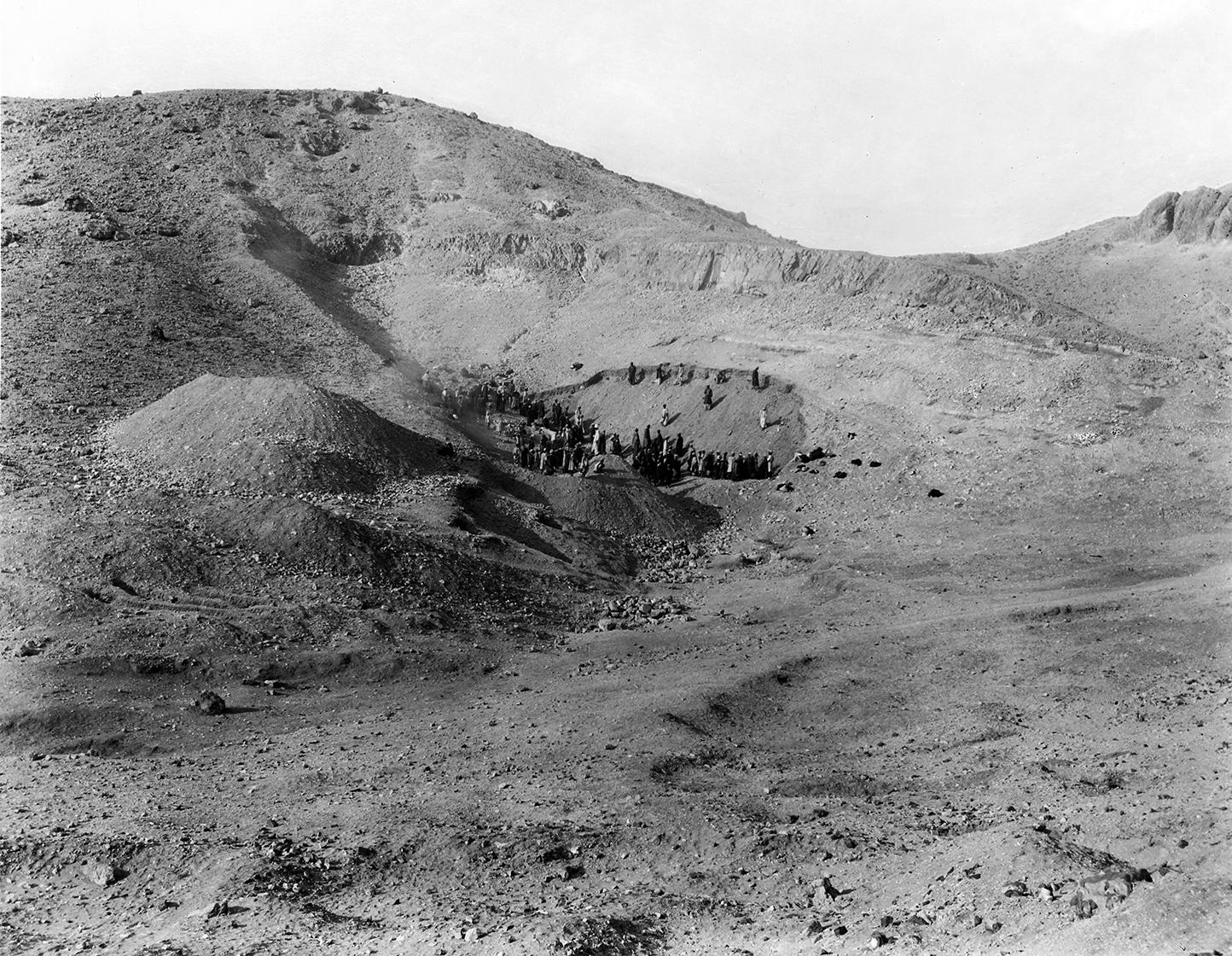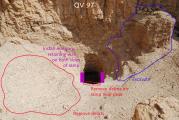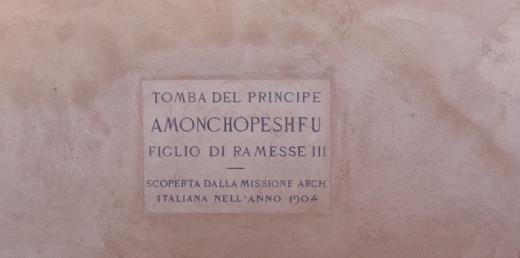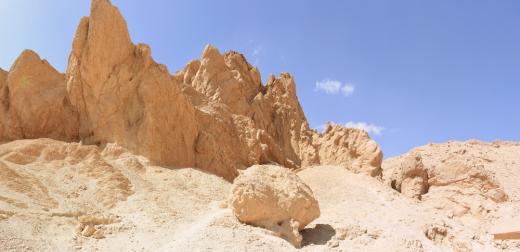QV 97
Anonymous*
About
About
QV 97 is located at the base of a cliff at the head of the Valley of the Rope. The tomb consists of an entry Ramp leading to a long horizontal corridor cut into the bedrock and opening into a single chamber at the rear. It is not decorated.
The tomb was discovered in 1903 by the Italian Archaeological Expedition. Schiaparelli recorded that the ceiling of the main chamber was unstable due to the collapse of its single supporting pillar. Given this instability, excavation within the tomb was called off before completion. Since relatively little archaeological material was recovered, namely one fragment of an alabaster vase, Schiaparelli and Ballerini argued as to whether the tomb had been finished or indeed, ever used. Based on the form of the tomb, however, they proposed that it was carved during the 17th or 18th Dynasty.
The tomb entrance had been filled with debris by the time of Elizabeth Thomas' (1959-1960) and the Theban Mapping Project’s surveys and was rediscovered by the Franco-Egyptian Mission in 1995 during the course of a ground-penetrating radar survey. As with the Italian Archaeological Expedition, the tomb was not excavated due to structural concerns. The Franco-Egyptian team has proposed that it was carved during the 18th Dynasty based on analogues from Dayr al-Madinah.
Site History
The tomb was constructed in the 18th Dynasty.
Dating
This site was used during the following period(s):
Exploration
Conservation
Site Condition
QV 97 was not assessed from the interior by the GCI-SCA assessment team in 2006-2008. They have reported that the ground surrounding the entrance is friable and continues to erode. The entrance itself remains in good condition and a rubble wall has been constructed in front of it. Given what is visible from the entrance, the corridor also appears in good condition. The chamber itself, however, is likely to be as unstable as it was when it was first discovered. Erosion around the entrance Ramp threatens to obscure or rebury the entrance once again. Both the Italian Archaeological Expedition and the Franco-Egyptian Mission were concerned about the stability of the ceiling of the tomb's chamber, though the rate of deterioration remains uncertain.
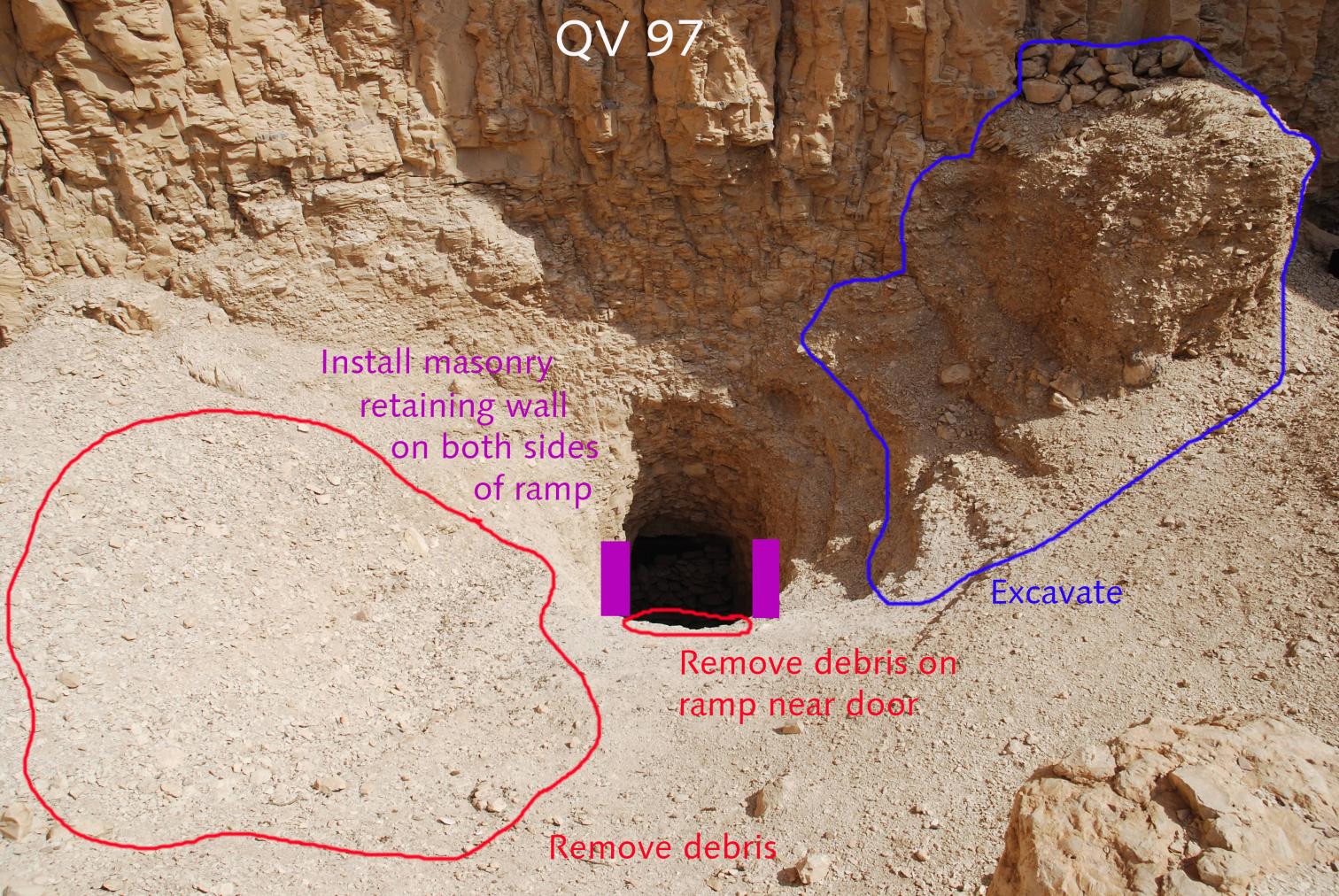
Articles
Tomb Numbering Systems in the Valley of the Queens and the Western Wadis
Geography and Geology of the Valley of the Queens and Western Wadis
Bibliography
CNRS mission report: Centre national de la recherche scientifique. Rapport des activites scientifiques et administratives 1995-1996. URA No1064 Recherches sur les Necropoles Thebaines et le Ramesseum, 1995-1996
Côte, Philippe, Xavier Derobert, Christian Leblanc and Angelo Sesana. Prospection géophysique et archéologique dans la Vallée de la Corde: rapport préliminaire, campagnes 1993-1994-1995. Memnonia 7 (1996): 141-56.
Demas, Martha and Neville Agnew (eds). Valley of the Queens. Assessment Report. Los Angeles: The Getty Conservation Institute, 2012, 2016. Two vols.
Thomas, Elizabeth. The Royal Necropoleis of Thebes. Princeton: privately printed, 1966.
